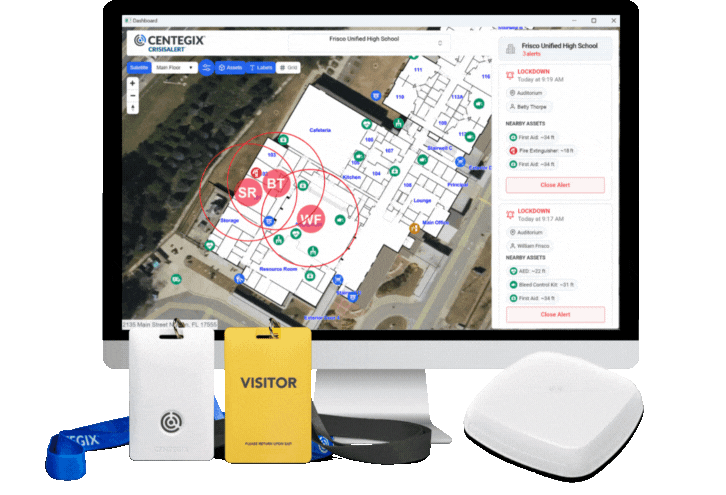The General Duty Clause from the OSHA Act of 1970 requires all employers to provide a work environment “free from recognized hazards that are causing or are likely to cause death or serious physical harm.” Violence in healthcare is a recognized hazard, and employers have the responsibility to mitigate that hazard. The U.S. Bureau of Labor Statistics recently found that healthcare workers’ risk of injury due to workplace violence is five times greater than that of workers in other industries. Violence in healthcare affects all staff—a recent poll of more than 30,000 emergency physicians found that witnessed emergency department violence was up 24 percent when compared to a similar poll conducted in 2018. Sixty percent of those who have experienced violence are bedside nurses. This is alarming when considering 23 percent of employees, according to another recent study, said their hospitals do not have a current plan in place to protect workers. Caregivers exposed to workplace violence are at risk of developing an array of mental health issues, such as stress disorders, anxiety, and depression. Caregivers also experience decreased job satisfaction and burnout, leading to lower patient satisfaction. Violence in the workplace is a huge point of concern for healthcare leaders, especially Chief Nursing Officers (CNOs). As a CNO, you have to juggle many different responsibilities. Patient satisfaction, scheduling, and advocating for staff are just a few of the duties CNOs execute every day. On top of those duties, CNOs have to consider risk management and effectively protect their staff from violence. CNOs are the main advocates for their nurses and staff and have the power to influence decisions within their organization. Fostering a culture of safety is imperative for organizational success, and it all begins with ensuring staff have the resources they need to feel safe. Creating a safety culture comes from layering safety protocols, technology, and people, and there are many factors to consider when crafting a comprehensive safety plan. 
Finding the Right Safety Partner for Your Organization
Not every safety solution can offer everything your organization needs, especially with the recent rise in workplace violence in healthcare. There are a few key factors to consider when deciding which safety solution is best for you and your nursing staff: communication, accessibility, reliability, setup, and compliance. Communication. It is no secret that health systems are fast-paced, busy environments—a consequence being communication errors are inevitable. Patients interact with various providers, many of whom are not in direct contact with the rest of the care team. The nature of the healthcare setting can lead to communication oversight, even when stellar medical care is being provided. Hospitals and other healthcare organizations should prioritize effective communication systems to avoid potentially devastating consequences of communication errors, especially in light of the risk of violence in healthcare. One innovative safety platform, for example, supports discreet ways to communicate and request help, offering employees the chance to share their location and need for immediate help with three silent button clicks. Accessibility. When a workplace emergency occurs, the last thing nurses and healthcare staff should be worried about is whether they can access vital resources. Access to rapid, convenient, and discreet assistance is imperative to an organization’s risk management plan and nurses’ peace of mind. CNOs should look for practical safety solutions that allow staff to request help discreetly while simultaneously de-escalating the situation. Reliability. You can’t expect successful outcomes in emergencies if you can’t rely on your safety solution. The ideal safety solution includes a system capable of rapid communication with everyone on campus. Another reliability indicator is connectivity. The most reliable systems can send requests regardless of Wi-Fi signal and have secure networks with 100% full-campus coverage. Many safety companies still rely on Wi-Fi to support their platforms, but the best safety partners implement self-contained, self-healing Bluetooth. Setup. Staying current on technology is a huge pain point for healthcare leaders—they have to carefully balance implementation with what is best for staff and patients. Many leaders in the healthcare safety space are easing some of that responsibility by simplifying the setup process. By utilizing a safety solution provider with products that integrate into a healthcare setting with minimal disruption to infrastructure, hospitals will gain a valuable tool for keeping staff members safe and providing administrators with the data they need to protect their workforce and prevent workplace violence in healthcare. Compliance. Another key responsibility of CNOs is compliance with laws and regulations. New regulations and compliance standards are emerging all the time—from OSHA to The Joint Commission, CNOs must ensure their safety plan aligns with regulations. Some states are upping their response to workplace violence as well. For example, a recently enacted Texas law will require healthcare facilities to adopt, implement, and enforce a written workplace violence prevention plan. When choosing a safety solution, there is a bare minimum. However, considering the rise of violence in healthcare, leaders should ensure their safety plan and technology can exceed compliance requirements.
Protect Your Nursing Staff with CENTEGIX®
The effects of violence in healthcare have been deemed a public health emergency by many, and in addition to affecting nurses, it can impact many other areas of healthcare organizations:
- Patient distress
- Inadequate care
- Decreased patient satisfaction
- Healthcare costs
- Provider shortages
Addressing violence in healthcare in conjunction with evaluating safety technology can be extremely stressful—but it doesn’t have to be. CENTEGIX is honored to provide hospitals with the tools to keep their workforce safe. CENTEGIX Safety Platform™ is an advanced hospital safety solution designed to create a culture centered around safety, improving retention, and reducing turnover. CENTEGIX Safety Platform offers precise, room-level location capabilities to ensure a rapid and effective response during moments of need. The Safety Platform at a glance:
- Discreet, one-button activation on wearable duress button
- Digital asset mapping
- Total campus coverage
- Audio and/or visual notification
- Precise location services with visitor management capabilities
- Easy installation and integration with existing technologies
- Automatic, robust reporting collected on an easy-to-use dashboard
- OSHA, CMS, and JC compliant
- Self-contained, self-healing Bluetooth network
The CENTEGIX CrisisAlert wearable staff duress button provides an easy, discreet way for staff to request help, allowing staff to leverage their de-escalation training. With precise location accuracy, first responders know exactly where to dispatch help. Whether staff are providing care in patient rooms, working in the emergency bay, or walking in the parking garage, CENTEGIX CrisisAlert delivers 100 percent full-campus coverage for your staff. The CENTEGIX Safety Platform can secure every square foot of hospital property without Wi-Fi and cellular dead zones. Hospital staff can request help anywhere on campus, from secure ORs to parking lots, and no Wi-Fi or cell signal is needed. CENTEGIX Safety Blueprint™ provides hospitals with digital maps of their campuses—including information about safety equipment —which is invaluable for staff and first responders in high-stress emergencies. CENTEGIX Safety Blueprint is highly customizable so that hospitals have a solution tailored to their needs. CENTEGIX enables hospital leaders to do what they do best—make smart decisions for their organizations. Safety Blueprint provides collaboration between departments within the healthcare setting so that everyone is working from the same foundational information. The maps can be updated to meet unique needs and features as they change. No healthcare organization is exactly the same, so customization is key. In addition to the customization, CENTEGIX CrisisAlert can be installed with no alterations to physical structure or electrical wiring, and installation can be completed with minimal disruption to patient care. CENTEGIX Visitor Management enhances the supervision of hospital traffic to provide accurate information for all visitors. Enhanced Visitor Management is capable of locating all visitors on campus—which is vital to whole-community safety in the event of emergencies. As a CNO, you know that every second matters. Set your healthcare organization up for success if disaster strikes. CENTEGIX is a leader in developing innovative safety solutions for organizations nationwide. Click here to learn more about what we can do for your healthcare organization and see a CENTEGIX Safety Platform demo.










